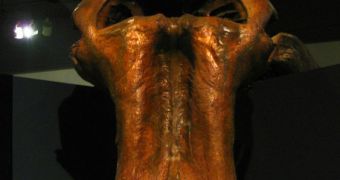A group of scientists from the University of California in Los Angeles (UCLA) says that woolly mammoths disappeared due to a lethal combination of factors. The creatures went extinct between 4,000 and 10,000 years ago, and no one knew precisely why until recently.
The study showed that the last of the creatures were killed off by habitat change, global warming and encroaching human presence. Interestingly, these are the main perils threatening most of today's endangered species, the team comments.
Details of the new study appear in a paper published in the June 12 issue of the top scientific journal Nature Communications. Experts from the University of California in Santa Cruz (UCSC), the Russian Academy of Science and the University of Hawaii Manoa were also part of the study.
The work was led by UCLA professor of geography and of ecology and evolutionary biology, Glen MacDonald. He is also the director of the Institute of the Environment and Sustainability (IoES).
“We were interested to know what happened to this species during the climate warming at the end of the last ice age because we were looking for insights into what might happen today due to human-induced climate change,” MacDonald explains.
“The answer to why woolly mammoths died off sounds a lot like what we expect with future climate warming,” he argues. Colleagues Robert Wayne and Blaire Van Valkenburgh, both IoES scientists, and UCLA geographer Konstantine Kremenetski also helped with the investigation.
In the past, researchers believed that human hunters were the primary factor driving the extinction of woolly mammoths. However, the new study shows that, while humans did play a role, they did not cause the creatures' disappearance on their own.
Woolly mammoths thrived during the last ice age, which concluded around 15,000 years ago. After that time, temperatures began to rise slowly and only stopped briefly, during the Younger Dryas temperature anomaly, around 12,900 years ago, before resuming.
“It's not just the climate change that killed them off. It's the habitat change and human pressure. Hunting expanded at the same time that the habitat became less amenable,” MacDonald says.
The warm spell reduced the amount of grasses and willows available to the woolly mammoths, while extending forests, peatlands and conifers. Eventually, the species simply could not handle the pressure.

 14 DAY TRIAL //
14 DAY TRIAL //